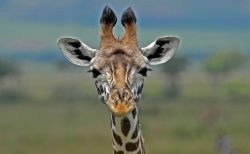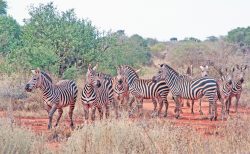Amboseli
 Amboseli National Park lies immediately north-west of Mount Kilimanjaro, on the border with Tanzania. Despite covering an area of only 392 square kilometers the Amboseli National Park encloses 5 different habitats: the acacia forests, the rock formations of lava covered with thorny bushes, the palm trees, the dusty plains of open savannah and the lakes and marshes; because of its diversity and for its fragile ecosystem the Amboseli National Park was declared a UNESCO Biosphere Reserve.
Amboseli National Park lies immediately north-west of Mount Kilimanjaro, on the border with Tanzania. Despite covering an area of only 392 square kilometers the Amboseli National Park encloses 5 different habitats: the acacia forests, the rock formations of lava covered with thorny bushes, the palm trees, the dusty plains of open savannah and the lakes and marshes; because of its diversity and for its fragile ecosystem the Amboseli National Park was declared a UNESCO Biosphere Reserve.
The main attraction for visitors to Amboseli is: elephants - the largest terrestrial animals can be seen in herds that often number more than 100 individuals, from wise old matriarchs to tiny calves; and the most iconic and majestic views of the world's highest free-standing mountain Kilimanjaro. It's probably one of the most photographed wildlife areas in the world
The National Park is habitat to the renowned ‘Big 5’ apart from elephants you can find rhinos, buffaloes, leopards as well as lions. Also wildebeests, cheetahs, plain zebras, crocodiles, giraffes as well as hyenas call this park home. You will as well find an impressive array of bird species living within the park boundaries
Amboseli Observation Hill is loved by visitors: a hill of volcanic origin, the only high point of the park, offering a breathtaking panorama that sweeps from the arid and dusty prairie to the green springs and swamps beloved by elephants, hippos and buffalos and, on clear days, especially at dawn and dusk, the majestic Mount Kilimanjaro.
The best time to visit is the dry seasons from June to October and from December to March; while in the period from November to January birds are present in the park, also those migrating here from Europe and Asia, making the park a paradise for birdwatchers.














